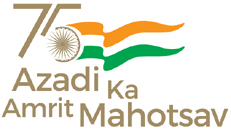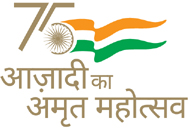



Journal of Agricultural Extension Management
Vol XIX July - December, 2018, No.2
1. Determinants of Smallholder Farmers’ Participation in Community- Based Onion Seed Producing and Marketing Cooperatives in Northwest Ethiopia/ Beneberu Assefa Wondimagegnhu and Girma Eshetu Heyi
Abstract
Onion seeds are mainly supplied by community based seed production and marketing cooperatives in Ethiopia. The problem of seed marketing which was faced by the onion seed producer and marketing cooperatives of Mecha district of Amhara regional state is the major reason for undertaking this study. The study analyzes the main factors for members’ participation in their cooperatives. This objective serves as an indicator for the general performance of the cooperatives in running the seed business. The research used descriptive statistics and binary logistic regression model to assess members’ socio-economic, demographic and institutional factors determining members’ participation in cooperatives and describes seed quality status. A Semi-structured questionnaire was employed to collect primary data. A total of 120 members were randomly selected from three cooperatives in February, 2018. The study indicated that the cooperatives have been weak in making profit from the seed marketing due to their poor involvement in onion seed distribution and supply of other inputs. The findings show that there exists significant difference between active and inactive members of the cooperatives in terms of land ownership, duration of membership, information and training access, dividend obtained, satisfaction on management and communication channels used. The logistic regression result indicated that land holding, access to training for members and communication channel used were significant in determining the level of members’ participation. The cooperatives should improve their scope and performance so as to enable members to engage more in production and marketing of seeds and enhance their participation.
Key words: seed producers, cooperatives, participation, onion seed, Mecha district, Ethiopia
2. Socio-economic Factors Influencing Utilization of Manual Screw Press for Gari Production in Kwara State, Nigeria/ Adegbola Adetayo Jacob, Wegh Francis Shagbaor, Ikwuba Agnes Agbanugo and Nwafor Solomon Chimela
Abstract
This study investigated socio-economic determinants of utilization of manual screw press for cassava mash dehydration for gari production in four local government areas across the ADP zones in Kwara state, Nigeria. Using multistage sampling technique and a semi-structured questionnaire as an instrument, data for the study were collected from a sample of three hundred and eighty four (384) gari processors who use the screw press in the state. Multiple regression analysis shows that a correlation (R=0.678) exists between utilization of the screw press and independent variables which include age, household size, level of education, years of processing experience, extension visits, and income from gari processing. R2 value of 0.460 indicates that about 46 per cent of the variation in utilization was explained by socio-economic variables included in the regression model. Three variables significantly influenced the decision of the respondents to utilize the manual screw press: age, level of experience, and income; the most important predicator being income with a Beta value of 0.699. Conclusively, it was recommended among others that research, extension, and policy makers consider the significant determinants identified in the study seriously if increased utilization is to be achieved by gari processors and others similar to them in the study area and the region.
Key words: Improved technology, Manual screw press, Socio-economic factors, Utilization.
3. Training Needs Identification of Agricultural Extension Agents in Wadi Zabid of Tihama Region, Yemen/ Ali Hassan O Khalil
Abstract
This study explored and described the in-service training needs of agricultural extension agents in Wadi Zabid of Yemen. Using a structured questionnaire, data were collected from forty one (n=41) randomly selected extension agents. Based on the Borich Needs Assessment Model, a survey of 40 competencies from previous research was developed to identify training needs of extension agents (n=41). Mean and standard deviation were calculated to report extension agents’ perceived level of performance and ability to practice for each professional competency, while mean weighted discrepancy scores (MWDS) were calculated to indicate in-service training needs. Findings revealed that the mean age of the respondents was 42.3 years. 31.7 per cent of them have a Bachelor’s degree in agriculture and more than half (51.2 %) of the respondents had been working in extension services for 18 years. In addition, 73.2 per cent of the extension agents were male and 26.8 per cent were female. Furthermore, the findings of this study reported that the most important competencies for extension agents were understanding the farming and production system(M=4.78);communicating farmers’ problems to researchers (M=4.73); understanding the duties and responsibilities at district and village level (M=4.70); understanding rural culture(M=4.70) and understanding the educational learning process of extension education (M=4.65). However, the findings showed that the highly rated in-service training needs were,producing print-based products (MWDS= 16.38); searching information on the internet(MWDS=15.7); preparing power point slides (MWDS=15.43); using e-mail (MWDS=14.88); using word processing software (MWDS=14.01 ); using flip chart flash cards(MWDS=12.56); operating film projector (MWDS= 12.25) and evaluating the effectiveness of extension visual-aids respectively(MWDS= 11.95).
Key words: training needs, competencies, agricultural extension agents, Yemen
4. Factors Affecting Work Motivation of Agricultural Extension Officers of Odisha/ G. Jaya
Abstract
Well-trained and highly motivated extension functionaries play a critical role in agricultural development as they provide advisories and extension services to the farming community. This study was undertaken to find the factors that influence work motivation of newly-recruited extension functionaries of Odisha state. In the present study, five different aspects of motivation were studied using relevant statements. The statements are sub-grouped as Achievement motivation, Advancement motivation, Work itself is motivation, Recognition motivation and Growth motivation. The study revealed that extension officers are innovative in thinking and ready to take new and non-routine assignments. When the situation demands, they are ready to take decisions and also take responsibility towards their role in agriculture extension related activities. A significant number of extension officers felt proud of their achievements. The functionaries perceived high score in career development than monetary benefits. They are highly motivated when farmers recognize and appreciate their work and services.
Key words: Motivation, Extension officers, Odisha
5. Factors affecting the Perception of Farmers about Climate Change in Agriculture/ Balasubramani Nanjappan and J Parameswaranaik
Abstract
Climate is a critical factor in the livelihoods of people and socioeconomic development as a whole, however the recent developments have adversely affected climate and its effect is seen in all the sectors. Among these different sectors, agriculture is highly sensitive to climate change where a large number of small and marginal farmers depend on agriculture and allied activities for their livelihood. In view of this, a study was undertaken in two states having different vulnerabilities to climate change with an objective of assessing the perception of farmers about climate change in agriculture and factors associated with their perception. The study reveals that a majority of the respondents perceived that the summer temperature is increasing during daytime (84.44% and night time (68.89%), water requirement for the crops has increased (80.00%). The variables such asage, education, extension contact and mass media had a positive and significant relationship at one percent level of probability. Hence, timely access to extension services and weather information are crucial in shaping the perception of farmers about climate change.
Key words: Climate change, Perception, Farmers, Uttarakhand, Karnataka
6. Insights into Implementation of National Agricultural Market scheme in Telangana/ Shalendra and B K Paty
Abstract
A common market for agricultural produce in India is an idea at a time when agricultural marketing is faced with many challenges. An ICT based common market has the potential to address such limitations. Accordingly, the concept of electronic National Agricultural Market (eNAM) has been introduced by the Union Government. An attempt has been made, in the present paper, to understand the implementation of eNAM and assess its ability to live up to its potential. The observations made in selected markets in Telangana in terms of capturing arrivals, electronic price discovery and shortening of trade cycle hours triggers the hope for development of an agricultural market operating at the national level. The concept has the potential to catalyse the overall development of the sector, if over time, it is able to move beyond application of information technology by having a holistic development of the marketing system covering its different aspects. It is required to be pursued as a means and not as an end in itself and must be made to evolve accordingly.
Key words: Agricultural Marketing, National Agricultural Market, eNAM, Telangana
7. Temporal Analysis of Onion Prices in major Markets in India/ Amand Rajalaxmi and K.C. Gummagolmath
Abstract
In the last two decades, area and production of onion has increased,extending into non-traditional areas.However, there is a marginal increase in productivity. Price analysis of onion revealed that instability of the prices are high in domestic markets as observed in the last two decades period. On the contrary, in a few markets, a positive correlation between arrivals and prices of onion is witnessed indicating the existence of exogenous factors such as more number of traders operating during harvesting season for hoarding of the stock for onward sale in other markets. Price analysis of onion also revealed that there is a cyclic trend of sudden hike in the price of onion. Thus there is a need to curb the exorbitant price rise of onions by intervention of the government based on supply demand dynamics. There is also a need for strengthening the marketing information system and increasing of post-harvest management infrastructure for onion to resolve the issues related to onion supply chain in India, being the world’s second largest producer of onion.
Key words: Onion, wholesale prices, crop dynamics, seasonal arrivals and price index, domestic markets.
8. Extension Approaches Adopted by the Agri-allied Sector Departments of Karnataka State/ Mohd. Abdul Kareem, Shahaji Phand and Madhusudhan Borade
Abstract
The extension approaches followed by different extension organizations have resulted into wider spread of modern technologies and increase in agricultural production. However, in the agri-allied sector these extension approaches are not fully adopted due to several reasons.It has been seen that majority (85%) of the animal husbandry officers in Karnataka visited the farmers field daily, followed by sericulture officers (60%) and 50 per cent of horticulture officers and fisheries officers. Nearly 45 per cent of the horticulture officers, 40 per cent of the sericulture and fisheries officers and 10 per cent of the animal husbandry officers were involved in formation of farmer groups. General Extension Approach was the most popular among the agri-allied sector officers. It has been noticed that 90 per cent of horticulture officers, 85 per cent of animal husbandry officers and 70 per cent of the sericulture and fisheries officers were aware of the Agricultural Technology Management Agency (ATMA). However most of them; viz., 70 per cent of the sericulture officers, 50 per cent of the fisheries officers, 65 per cent of both animal husbandry and horticulture officers had no knowledge about the key functions of ATMA. Cent per cent of all the department officers in Karnataka stated that extension services were not system based and not converged with the other line departments. None of the officers recommended any farming systems to the farmers. Participatory approach and ICT approach were not much practiced by the allied sector officers as only 25 per cent were affirmative about the details of the participatory approach. Commodity approach and project approach of extension were least popular with the agri-allied officers of Karnataka State. Thus, it can be concluded that to promote adoption of other extension approaches among the agri-allied department officers, capacity building through induction training and refresher training programs on extension management aspects and well defined job chart inclusive of frequent field visits is the need of the hour for Karnataka State.
Keywords: Agricultural Technology Management Agency (ATMA), Commodity Approach, Extension Reforms Approach, Farming System, General Extension Approach, Information and Communication Technology (ICT), Participatory Approach, Project Approach






